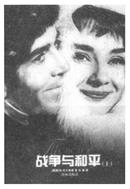阅读下列材料:
材料一 19世纪现实主义文学思潮是在特定的社会历史背景下产生的,它的形成是社会对文学的必然要求的结果。
现实主义摈弃浪漫主义的主观想象和抒情性,通过对社会作如实细致的描绘,揭露社会的黑暗、倡导社会改良。
材料二 下图为俄国一位批判现实主义作家的作品——《战争与和平》

材料三 作为创作方法,现实主义早在古希腊文学中就已经存在,即使是与现实主义相对立的浪漫主义文学,也为现实主义的繁荣作了准备,它是现实的创造,也是历史的继承。
——以上材料选自《外国文学史》
请回答:
小题1:根据材料一及所学知识,说明现实主义产生的“特定的社会历史背景”及这一流派的特点。(2分)
小题2:举出两位法国现实主义作家及其代表作品。(2分)
小题3:材料二中作品的作者是谁?他的著作除此之外还有什么?(2分)
小题4:据材料三,我们是否可以认为现实主义流派在古希腊就已形成?为什么?(2分)
小题5:综合材料一、材料三,你可以得出哪些认识?(1分)
(1)历史背景:19世纪30年代以后,欧美资本主义国家社会矛盾复杂尖锐。(1分)
特点:力图真实再现生活,深入剖析社会社会生活的本质,揭露和批判社会的罪恶。(1分)
(2)巴尔扎克的《人间喜剧》、罗曼·罗兰的《约翰·克里斯朵夫》等。(2分)
(3)列夫·托尔斯泰,《安娜·卡列尼娜》。(2分)
(4)不能,因为文学流派的形成不仅取决于创作方法上的不同,还受许多其他方面的影响。(2分)
(5)认识:文学源于生活,表现生活,又高于生活(社会存在决定社会意识);文学具有继承性的特点,是在继承与发展中不断繁荣的。(1分,答一点即可)
题目分析:(1)背景:19世纪30年代以后,欧美资本主义国家的社会矛盾日趋尖锐。
《 * * 党宣言》:“19世纪30、40年代是资本主义制度在西欧几个主要国家最后战胜封建主义的时期。资本主义制度的确立和巩固,使资本主义社会的阶级矛盾和各种社会弊病日益显露和激化,“使人和人之间除了赤裸裸的利害关系,除了冷酷无情的‘现金交易’,就再也没有任何别的联系了”。特点:关注社会问题,典型地再现社会风貌,深入剖析社会生活的本质,揭露和批判社会的罪恶。
(2)结合所学知识,巴尔扎克是19世纪法国伟大的批判现实主义作家,欧洲批判现实主义文学的奠基人和杰出代表。一生创作96部长、中、短篇小说和随笔,总名为《人间喜剧》。马克思、恩格斯称赞他是“超群的小说家”、“现实主义大师”。资本主义的“社会百科全书”。此外法国现实主义作家及其代表作品还有罗曼·罗兰的《约翰·克里斯朵夫》等。
(3)结合所学知识,《战争与和平》的作者是列夫·托尔斯泰,其另一部作品《安娜·卡列尼娜》是托尔斯泰的一部既美不胜收而又博大精深的巨著。通过这个故事托尔斯泰揭示了俄国社会中妇女的地位,并由此来鞭挞它的不合理性。
(4)不能,结合规律认识,社会存在决定社会意识,社会意识反映社会存在。
(5)19世纪以来,欧洲的政治、经济、文化经历了翻天覆地的变化,文学艺术作为现实生活的一面镜子,生动反映了这一系列的社会变迁。那些目光敏锐、思想活跃的文学家们用自己的文字,表达了他们对社会变迁的深刻思考。据此得出认识。
点评:本题难度不大,主要考查学生再认再现历史知识的能力,回答时必须结合从教材中所学内容,进行知识衔接,将教材与材料相结合。
